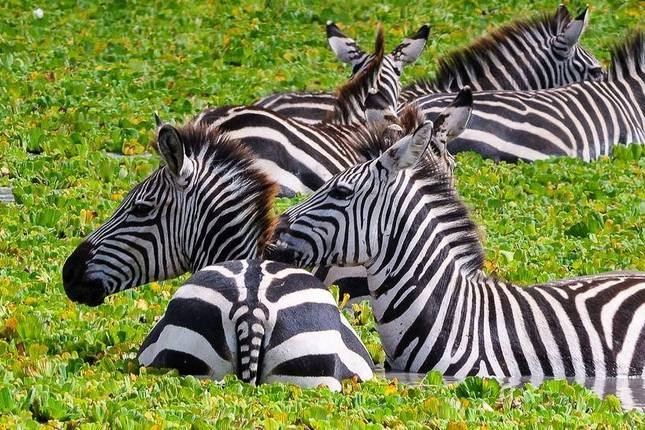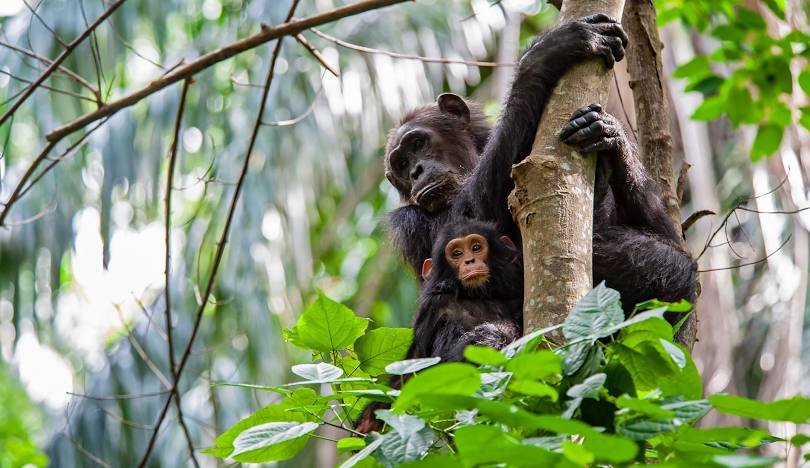Western Circuit
Exploring the Western Circuit of Tanzania
The Western Circuit of Tanzania offers some of the most remote and untouched wilderness experiences in the country, making it an ideal destination for adventurers and nature enthusiasts looking to explore off-the-beaten-track locations. This circuit is particularly renowned for its exceptional primate viewing opportunities and pristine natural beauty.
1. Gombe National Park
Gombe National Park, located on the eastern shore of Lake Tanganyika, is Tanzania’s smallest national park but one of its most famous due to the pioneering work of Dr. Jane Goodall. Initially established as a game reserve in 1943, it was designated a national park in 1968 following Dr. Goodall’s groundbreaking research on chimpanzee behavior, which began in the early 1960s.
The park is characterized by lush forest landscapes, steep valleys, and clear streams flowing into Lake Tanganyika. Gombe is best known for its wild chimpanzee population, offering one of the most intimate and accessible chimp trekking experiences in Africa. Visitors can observe the fascinating social behaviors of these primates, including tool use, grooming, and complex family interactions.
Aside from chimpanzees, Gombe is home to other primates such as olive baboons, red colobus, and vervet monkeys. The park also supports diverse birdlife, making it a paradise for birdwatchers. Activities include guided chimpanzee treks, forest walks, birdwatching, and snorkeling in the crystal-clear waters of Lake Tanganyika.
2. Mahale Mountains National Park
Mahale Mountains National Park lies south of Gombe along the eastern shore of Lake Tanganyika in Uvinza District, Kigoma Region. Named after the Mahale mountain range within its borders, the park boasts dramatic landscapes, including dense forests, rugged peaks, and sandy beaches along the lake’s shoreline.
What sets Mahale apart is its remote wilderness and the opportunity to track some of the largest populations of wild chimpanzees in Africa. Unlike Gombe, where chimpanzees are more habituated to human presence, Mahale’s chimps offer a more raw and authentic trekking experience. The park is also unique because there are no roads within its boundaries; all exploration is done on foot or by boat, enhancing the sense of adventure.
In addition to primate tracking, visitors can hike the Mahale Mountains, swim and kayak in Lake Tanganyika, and enjoy unparalleled views from the forested peaks. The park is rich in biodiversity, hosting other wildlife like red-tailed monkeys, blue monkeys, and a variety of birds, reptiles, and aquatic species.
3. Katavi National Park
Located about 150 km southeast of Mahale, Katavi National Park is one of Tanzania’s most remote and least visited parks, with fewer than 500 tourists annually. Its isolation has preserved its wild, untouched charm, offering an authentic safari experience far from the crowds.
Katavi is renowned for its vast floodplains, seasonal lakes, and dense wildlife concentrations during the dry season (June to October). As water sources shrink, large herds of buffalo, elephants, zebras, and antelopes gather around the remaining pools, creating dramatic predator-prey interactions. The park is home to impressive populations of hippos and crocodiles, particularly in the Katuma River and Lake Chada.
Game drives and walking safaris provide excellent opportunities to witness the park’s abundant wildlife in an unspoiled setting. The park’s remoteness adds to its allure, offering a sense of solitude and connection with nature rarely found in more popular safari destinations.
Key Highlights of the Western Circuit:
Primate Tracking: World-class chimpanzee trekking in Gombe and Mahale Mountains.
Remote Wilderness: Katavi’s untouched landscapes and minimal tourist presence.
Adventure Activities: Hiking, kayaking, snorkeling, and walking safaris.
Lake Tanganyika: Africa’s deepest lake, offering pristine beaches and aquatic biodiversity.
Unique Ecosystems: A combination of tropical forests, mountains, lakes, and savannahs.
Best Time to Visit:
Gombe and Mahale: Best visited during the dry season (May to October) when chimpanzee tracking is easier.
Katavi: The dry season (June to October) offers the best wildlife viewing as animals congregate around water sources.
Getting There:
The Western Circuit is accessed primarily via flights from Dar es Salaam or Arusha to Kigoma. From Kigoma, Gombe is reached by boat, while Mahale and Katavi require charter flights or boat transfers. The remote nature of these parks makes logistics more complex, but the reward is an unparalleled wilderness experience.
Conclusion:
The Western Circuit of Tanzania is a hidden gem for those seeking unique wildlife encounters, breathtaking scenery, and true adventure. Whether it’s following in the footsteps of Jane Goodall to observe wild chimpanzees, exploring the remote forests of Mahale, or experiencing the raw beauty of Katavi’s savannahs, this region offers unforgettable experiences for the intrepid traveler.










